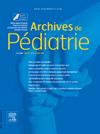Efficacy and tolerance of neostigmine to improve digestive motility in neonates after gastroschisis surgery
IF 1.3
4区 医学
Q3 PEDIATRICS
引用次数: 0
Abstract
Background
The management of gastroschisis involves immediate surgery and post-surgery nutritional management. Ileus is a frequent complication, leading to difficulties in establishing enteral feeding. Parasympathomimetic agents, including neostigmine, are safely used in case of ileus in adults. Neostigmine was used in a single neonatal intensive care unit (NICU) for the management of ileus after gastroschisis repair.
Objective
The aim of this study was to report this experience of neostigmine use to improve digestive motility and its tolerance.
Methods and settings
This is an observational study from electronic health records (EHRs) that included all infants born with gastroschisis and treated with neostigmine in a NICU in Lyon, France, between June 2009 and December 2023. The primary outcome was the time to achieve effective enteral nutrition after the introduction of neostigmine. Secondary outcomes of tolerance and efficacy were also collected from the medical records. This study received approval from an ethics committee.
Results
Among 86 patients with gastroschisis, 16 patients received neostigmine due to either large volumes of gastric residue or absence of transit. They received neostigmine at a median (IQR) of 13.5 (12;17.25) days of life. Effective enteral feeding was achieved after a median of 11 (5.75;13) days of neostigmine treatment. Neostigmine was well tolerated, apart from one case of a serious but quickly resolved adverse event after intravenous administration.
Conclusions
The use of oral neostigmine in neonates with gastroschisis appears to be effective and safe. Larger prospective studies are required to determine its possible place in the management of these newborns.
新斯的明改善胃裂术后新生儿消化功能的疗效和耐受性:新斯的明改善新生儿消化功能的疗效和耐受性。
背景:胃裂的治疗包括立即手术和术后营养管理。肠梗阻是一种常见的并发症,导致肠内喂养困难。拟副交感神经药物,包括新斯的明,可安全用于成人肠梗阻。新斯的明用于单一新生儿重症监护病房(NICU)胃裂修复后肠梗阻的管理。目的:本研究的目的是报告新斯的明用于改善消化运动及其耐受性的经验。方法和背景:这是一项来自电子健康记录(EHRs)的观察性研究,该研究包括2009年6月至2023年12月期间在法国里昂NICU出生并接受新斯的明治疗的所有胃裂患儿。主要观察指标是引入新斯的明后获得有效肠内营养的时间。从医疗记录中也收集了耐受性和疗效的次要结局。这项研究得到了伦理委员会的批准。结果:86例胃裂患者中,有16例患者因胃残量大或胃未经过而接受新斯的明治疗。他们在平均寿命(IQR)为13.5(12;17.25)天时接受新斯的明治疗。新斯的明治疗中位数为11(5.75;13)天,肠内喂养有效。新斯的明耐受性良好,除了一例静脉给药后严重但迅速解决的不良事件。结论:口服新斯的明治疗新生儿胃裂是安全有效的。需要更大的前瞻性研究来确定其在这些新生儿管理中的可能位置。
本文章由计算机程序翻译,如有差异,请以英文原文为准。
求助全文
约1分钟内获得全文
求助全文
来源期刊

Archives De Pediatrie
医学-小儿科
CiteScore
2.80
自引率
5.60%
发文量
106
审稿时长
24.1 weeks
期刊介绍:
Archives de Pédiatrie publishes in English original Research papers, Review articles, Short communications, Practice guidelines, Editorials and Letters in all fields relevant to pediatrics.
Eight issues of Archives de Pédiatrie are released annually, as well as supplementary and special editions to complete these regular issues.
All manuscripts submitted to the journal are subjected to peer review by international experts, and must:
Be written in excellent English, clear and easy to understand, precise and concise;
Bring new, interesting, valid information - and improve clinical care or guide future research;
Be solely the work of the author(s) stated;
Not have been previously published elsewhere and not be under consideration by another journal;
Be in accordance with the journal''s Guide for Authors'' instructions: manuscripts that fail to comply with these rules may be returned to the authors without being reviewed.
Under no circumstances does the journal guarantee publication before the editorial board makes its final decision.
Archives de Pédiatrie is the official publication of the French Society of Pediatrics.
 求助内容:
求助内容: 应助结果提醒方式:
应助结果提醒方式:


